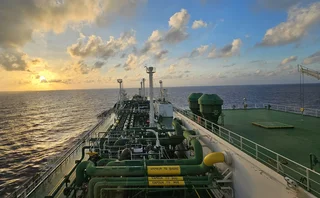
Energy Risk Software Rankings: A different world
Energy Risk’s Software Rankings reveal the industry’s technology preferences in a changing world
Click here to view the full tables
As Covid-19 causes social distancing and remote working around the globe, never has technology been more vital to the functioning of society, financial markets and the economy. Energy risk managers and traders the world over are having to allocate risk capital – during the most intense and volatile markets ever seen – from the isolation of their homes.
Commodity trading and software (CTRM) systems now need to supply real time information to a widely dispersed user base while carrying out the ever more complex calculations and dynamic modelling required in today’s turbulent markets.
Firms that have begun the journey to the cloud are likely to have advantages in this new environment. In a recent Energy Risk survey on the use of commodities technology by energy firms (which was sent out at the same time as the Software Rankings and will be published in full next month), almost one-third of respondents said their CTRM system is fully in the cloud, with a further 15% reporting that some functionalities are in the cloud.
CTRM systems now need to supply a single record of truth in real time to a widely dispersed user base while carrying out the ever more complex calculations and dynamic modelling required in today’s turbulent markets
While this signifies that over half of energy trading companies still have no cloud-based CTRM applications, it represents a substantial swing towards the cloud from last year.
In the 2019 survey, some 67% of respondents reported having no cloud-based CTRM applications at all, with only a quarter saying their CTRM system was fully in the cloud.
This year’s Energy Risk software survey was expanded for the second year running to reflect some of the new technological offerings now available to energy and commodity trading firms beyond the core CTRM space. It contains an entirely new section on logistics, shipping, land and rail transport, as well as some new sub-categories throughout. The CTRM section has been divided into ‘derivatives software’, ‘physical trading and operations software’ and ‘front- and middle-office functionality’ to better reflect real-world operations.
Once again, the CTRM section reflects the dominance of the large, traditional vendors such as Ion Commodities: Allegro, Ion Commodities: Openlink and Pioneer Solutions, as well as specialists like Lacima Analytics. The new transport section showed Veson Nautical and SmartFreight gaining first positions, while the enterprise risk section shows the popularity of firms such as CubeLogic, Pioneer and Lacima Analytics in that field.
In the data providers section, winners were Genscape, Kpler, Bloomberg and S&P Global Platts. ZE PowerGroup once again dominated the data management section, while there were wins for KWA Analytics, Lacima Analytics, Machina Automation and Publicis Sapient in the technology advisory category.
Methodology
The survey went live on January 14, 2020 and closed on February 14. It received 247 valid responses. To compile the Software Rankings, respondents were asked to vote for their preferred software vendor, data management firm, data provider and technology adviser in a variety of categories.
All votes were carefully checked and invalid votes stripped out. Examples of votes considered invalid are people voting for their own firm or using a free internet-based email address, multiple votes from the same person or IP address, and voters who choose the same firm indiscriminately throughout the survey.
Following closure of the poll, the results are subject to an internal review process, which can result in categories being dropped if they do not have enough votes. The outcome of the review is final.
More on Risk management
CRO interview: Shawnie McBride
NRG’s chief risk officer Shawnie McBride discusses the challenges of increasingly interconnected risks, fostering a risk culture and her most useful working habits
Increasingly interconnected risks require unified risk management
Operational risk is on the rise according to a Moody's survey, making unified risk management vital, say Sapna Amlani and Stephen Golliker
Energy Risk Europe Leaders’ Network: geopolitical risk
Energy Risk’s European Leaders’ Network had its first meeting in November to discuss the risks posed to energy firms by recent geopolitical developments
Energy Risk US Leaders’ Network: tackling volatility
Energy Risk’s inaugural US Leaders’ Network convened in Houston in October to discuss risk management challenges caused by geopolitical upheaval, policy uncertainty and volatility
LNG trading strategies set to change amid major market shifts
The global LNG market is on the brink of significant changes set to alter trading dynamics and market behaviour, say analysts
Why commodity finance is ripe for stablecoin
Digital currency brings cost efficiencies to financing, but its real benefit to commodity firms lies in making huge pools of new capital available, write Jean-Marc Bonnefous and Ronan Julien
US shutdown leaves commodity traders without key data
Commodity traders are ‘flying blind’ without Commitment of Traders reports
Energy Risk at 30: Learning from the past
Energy Risk looks back at the seminal events and developments that have shaped today’s energy markets







